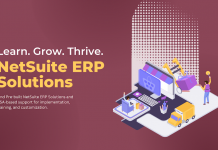In the business world, where data-driven decisions are key to success, having the right tools at your disposal can make all the difference. Enter the realm of white-label reporting, a customizable solution that offers comprehensive views of business data. It’s not just a tool but a resource that can be tweaked and tailored to your company’s needs. Keep reading to understand how you can make the most of white-label reporting.
Understanding White-Label Reporting Solutions
Alt text: A person sitting at a desk in front of a window in the evening using white-label reporting.
White-label reporting solutions are nothing but off-the-shelf software applications. Businesses can rebrand these software solutions, modify the features, and tailor the designs to align with their brand identity and business goals. The biggest strength of white-label solutions is their flexibility.
The core functionality remains consistent across different industries, making it a universally adaptable tool. This ease of adaptability and customization gives businesses a significant edge, helping them save on time and development costs.
Unlike conventional solutions, white-label reporting solutions are easily integrated with your existing systems. They seamlessly combine with your other business tools, ensuring a smooth data flow, robust interfacing, and minimal disruption to your existing operations.
A white-label reporting solution allows your business to venture into the data analytics realm, enabling you to generate insightful reports and make informed decisions backed by data.
Importance of an Effective White-Label Reporting System
An effective white-label reporting system is a convenience and a necessity in today’s data-driven world. It allows businesses to make informed decisions, provides insightful trends, and supports strategic planning. All of these contribute to a company’s ability to stay competitive in their industry.
Businesses need tools that help them evaluate, analyze, and understand their performance effectively. A white-label reporting system offers these benefits by providing precise and in-depth insights into business operations.
Moreover, these solutions have an end-user interface that can be custom-branded and configured per your business aesthetic and workflow. This ensures a smoother transition for your team, leading to more effective utilization.
Finally, white-label solutions are cost-effective, offering significant savings on development time, resources, and personnel, thus boosting your return on investment (ROI).
Essential Features To Consider in a White-Label Reporting Solution
Selecting the right white-label reporting solution requires careful evaluation of its features. An efficient solution should include real-time data analysis, seamless scalability, customization capabilities, and user-friendly dashboards.
Integrating real-time data analysis can have a significant impact on your decision-making ability. Immediate access to fresh data can provide insights into current trends, enabling you to adjust your strategies on the fly.
Scalability is an imperative feature to consider. As your business grows, your reporting solution should be able to expand and adapt as well, managing increased data volume without compromising on efficiency or speed.
Designing a White-Label Reporting Solution: Best Practices
When designing a white-label reporting solution, it’s crucial to put the end-users at the forefront. An intuitive, streamlined user interface can increase engagement and improve report consumption.
Efficient data visualization is a must. Utilize modern chart types, dynamic filters, and interactive report elements to aid users in understanding the data better. Incorporate components that help tell a story, leading to better insight interpretation.
Scaling Up: Best Practices for Implementing a White-Label Reporting Solution
Alt text: A team sitting at a conference table with laptops and a presentation about white-label reporting.
Once your white-label reporting solution is designed to your satisfaction, the next step involves efficient implementation across your organization. Start with small-scale adoption. Initially, onboard a select group of users, gather their feedback, and adjust the system accordingly.
As part of best practices, ensure the system is scalable, flexible, and easily integrated with different workflows and platforms. Ensure you have a solid support structure for any technical issues that may arise during the rollout process.
A thoughtfully designed and implemented white-label reporting solution can be a game-changer for your business. Regardless of your industry or domain, having a system that provides data-driven insights can significantly contribute to your decision-making process and overall business success.











